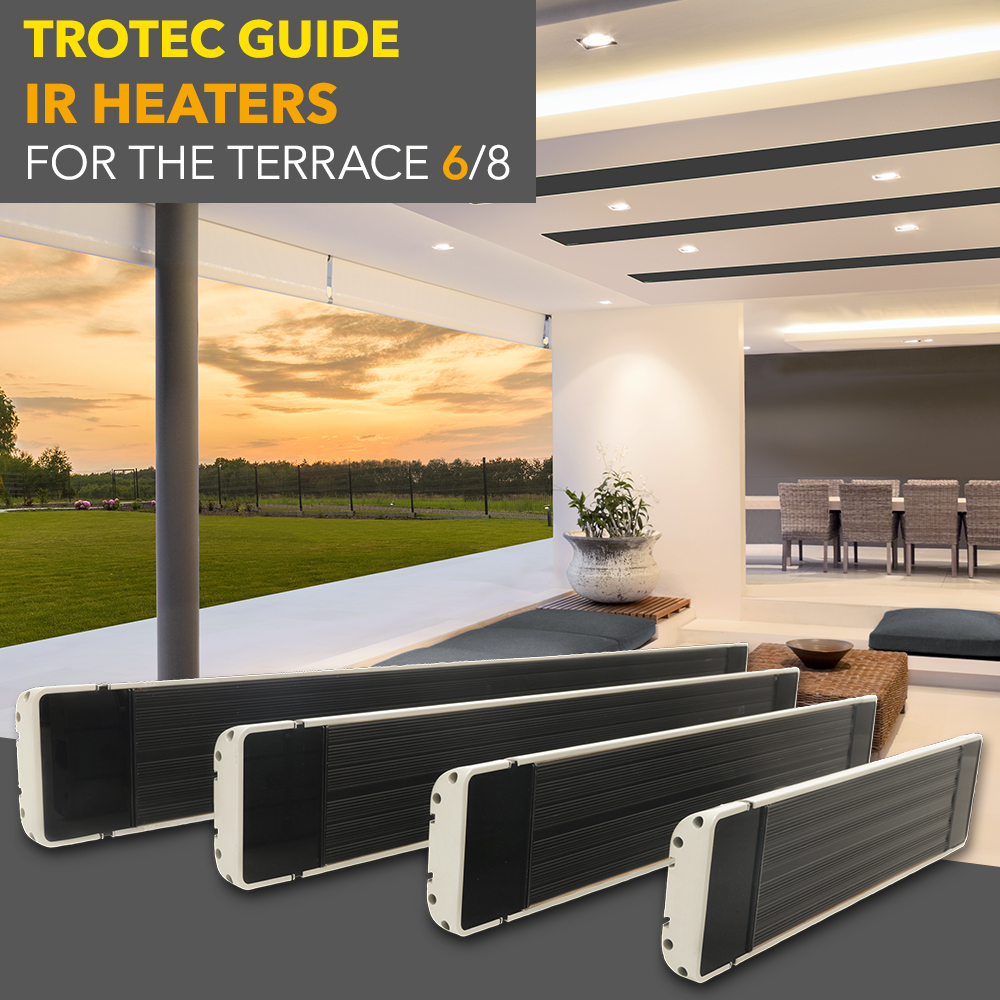The subject of security is in focus in this and the next issue of the ‘Infrared radiant heaters for your patio’ Trotec guide. Today we are discussing protection against ‘overcurrent’ and how you can avoid a short-circuit. And we are examining which cases are better for you to consult a trusted electrician prior to connecting an IR heater. In the upcoming blog post, we will discuss which IP protection classes an IP heater should be equipped with for the warming kind of outdoor service it provides on your patio.
Whichever heater type you ever, safety is crucial. Heaters that work with electricity must work reliably and safely. Our Trotec radiant heaters satisfy all the legal requirements. Because we want you to be warm and safe on your patio at the same time, we observe all the safety regulations as a matter of course and do more than that: All quality attributes and characteristic data of our infrared heaters are indicative of a high level of safety. The heaters are all TÜV-tested and have been given the GS seal for tested safety. But even if our modern IR heaters more than satisfy all safety aspects – your circuits are only able to withstand limited loads.
This is how you switch off the ‘overcurrent’.
‘Overcurrent’ is the term used to describe electrical current that exceeds the maximum permanently permissible current as a result of insulation faults, earth faults or short circuits, in other words overload. At the same time, it impairs the insulation of electrical devices. Therefore, before you connect an IR heater to an electrical circuit, you should check its load limit. For example, a power cable in the EU usually has a voltage of 230 volts and fuses for 16 amps. The total load should therefore not exceed 3680 watts.
However, when you now connect the patio radiant heater along with other larger electrical appliances, you will risk a short circuit. If you plan to use 2 radiant heaters with 2000 watts each, then this type of cable will already be overloaded. You should discuss this with your electrician because he can then plan enough circuits based on the number of radiant heaters you want. By the way, infrared patio heaters have a high power consumption. Therefore small load peaks in the millisecond range may occur when switching on the heater so that a ‘fast-blow’ quick release fuse pops out. Your electrician can also help in such cases. He will install a ‘medium-lag’ fuse on the circuit breaker which can withstand these kinds of short peak loads when it is switched on.
This is how you can learn more about the infrared heater solutions from Trotec:
- You will receive comprehensive information on our infrared heater series in our Trotec shop – here you can find the IR-S radiant heaters, IR radiant heaters, IRD dark radiant heaters as well as the IRS-E pedestal radiant heaters.
- Continue to follow our guide series on this subject: In the next issues we introduce the IP protection class concept and feature the Trotec infrared heaters in a direct comparison.
- Call our Trotec team of experts at +49 2452 962-400 or use our contact form. We provide advice when it comes to choosing one and answer your questions about our infrared heater series.
Overview of the ‘Infrared radiant heaters for your patio’ Trotec guide
1/8 Taking a look – How IR heaters actually work
2/8 Basic rules – This is how IR heaters are basically setup
3/8 Advantageous – IT heaters bring efficient cosy warmth
4/8 Numerous variants – The right IR heater for every purpose
5/8 Calculable – What IR heaters cost in terms of electricity
6/8 Numerous voltages – This is how IR heaters are supplied with electricity
7/8 To be on the safe side – The IP protection class is decisive for IR heaters
8/8 In a nutshell – What matters when it comes to IR heaters


